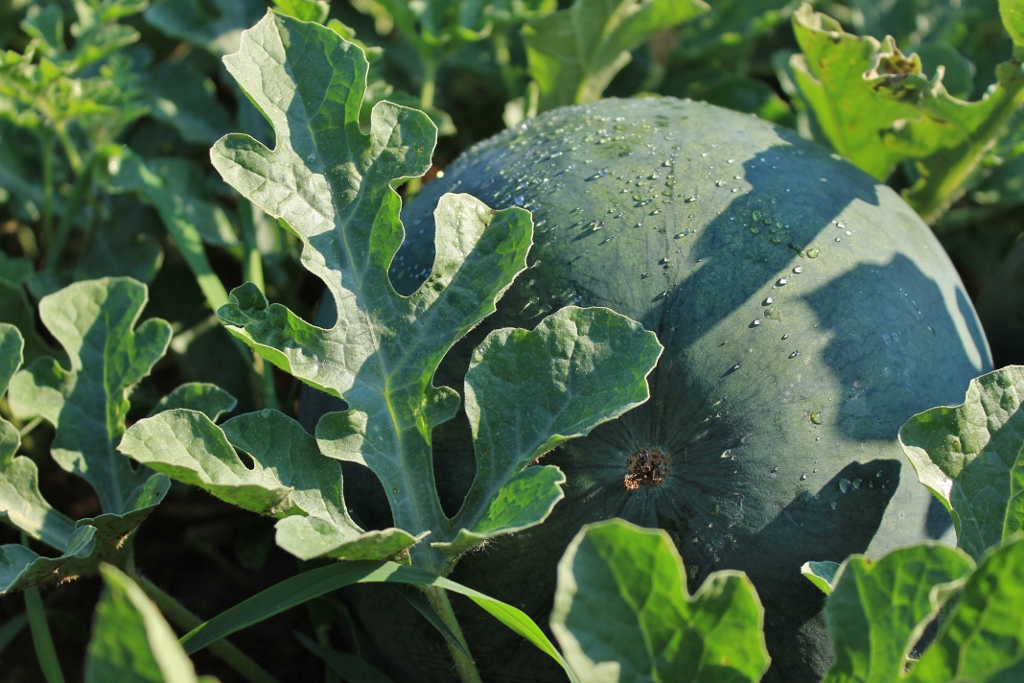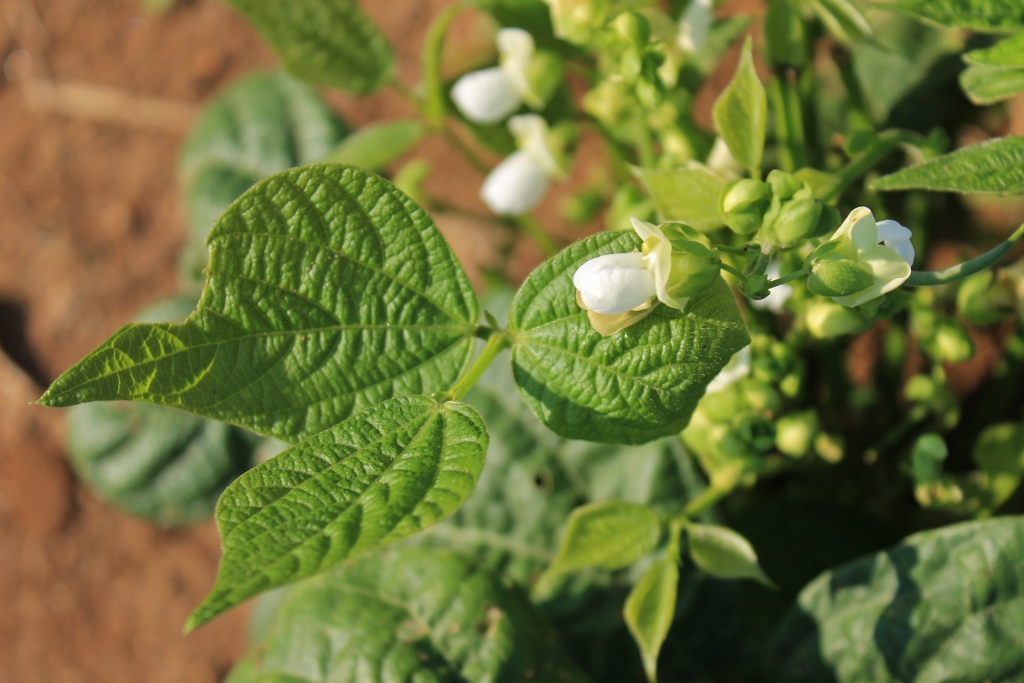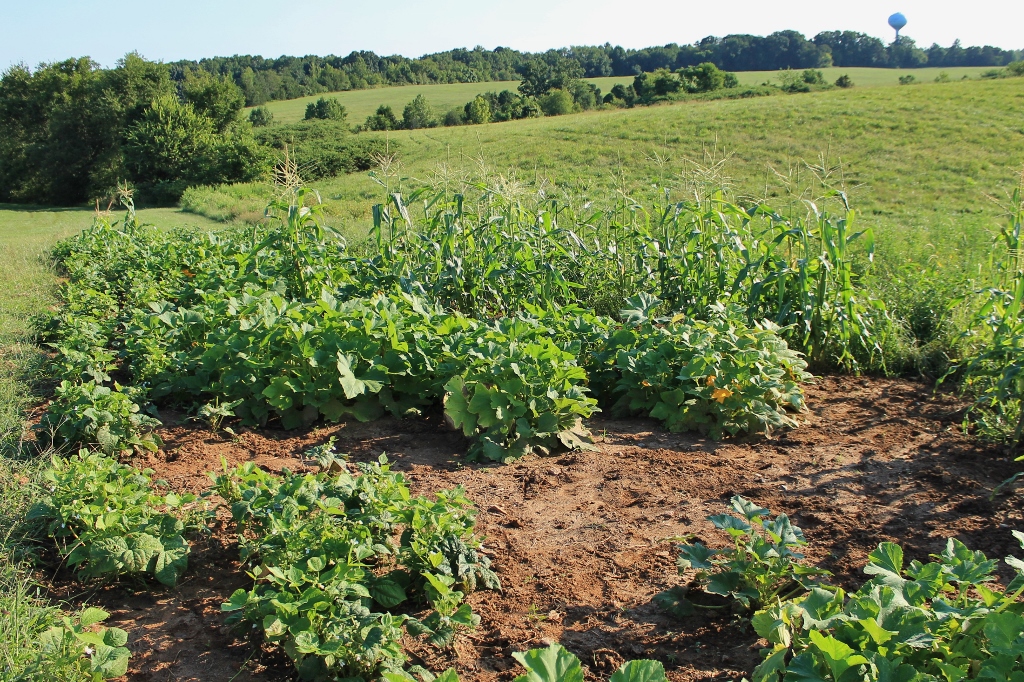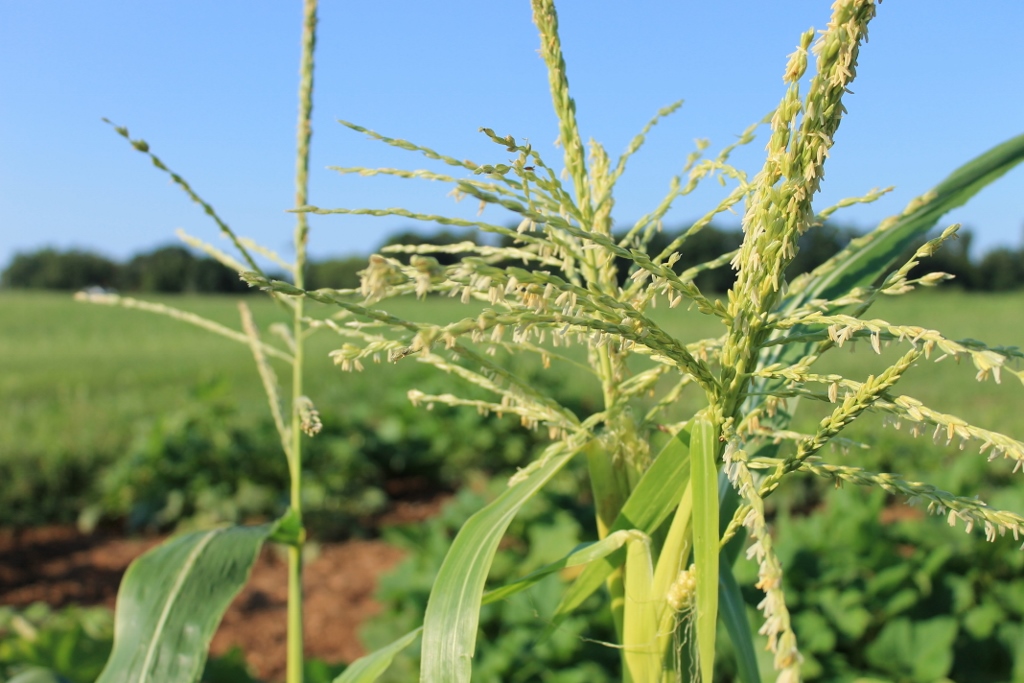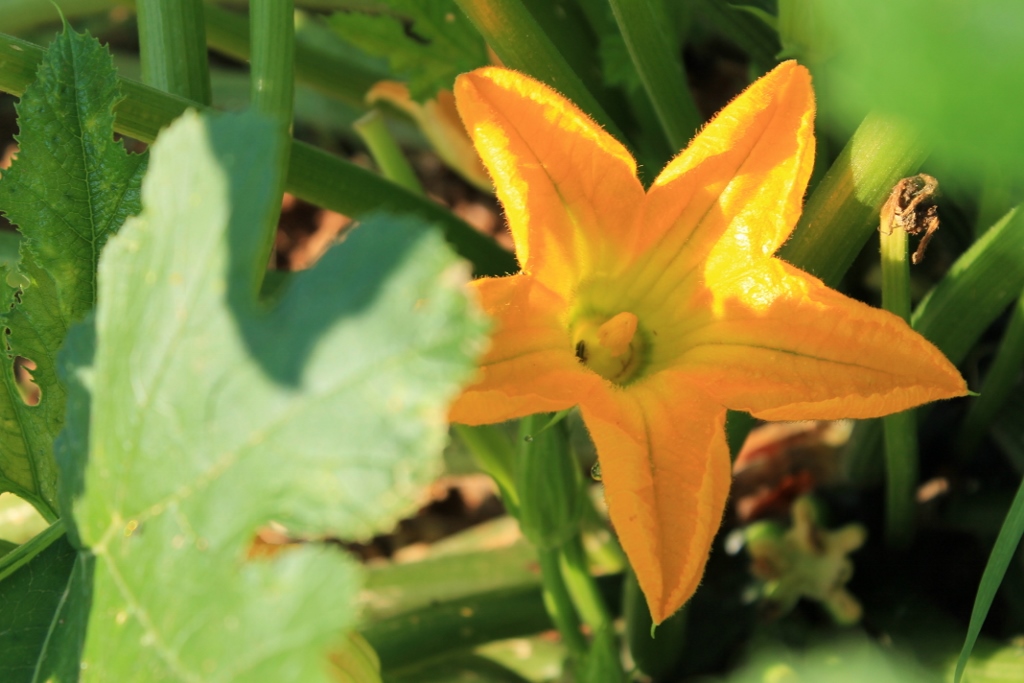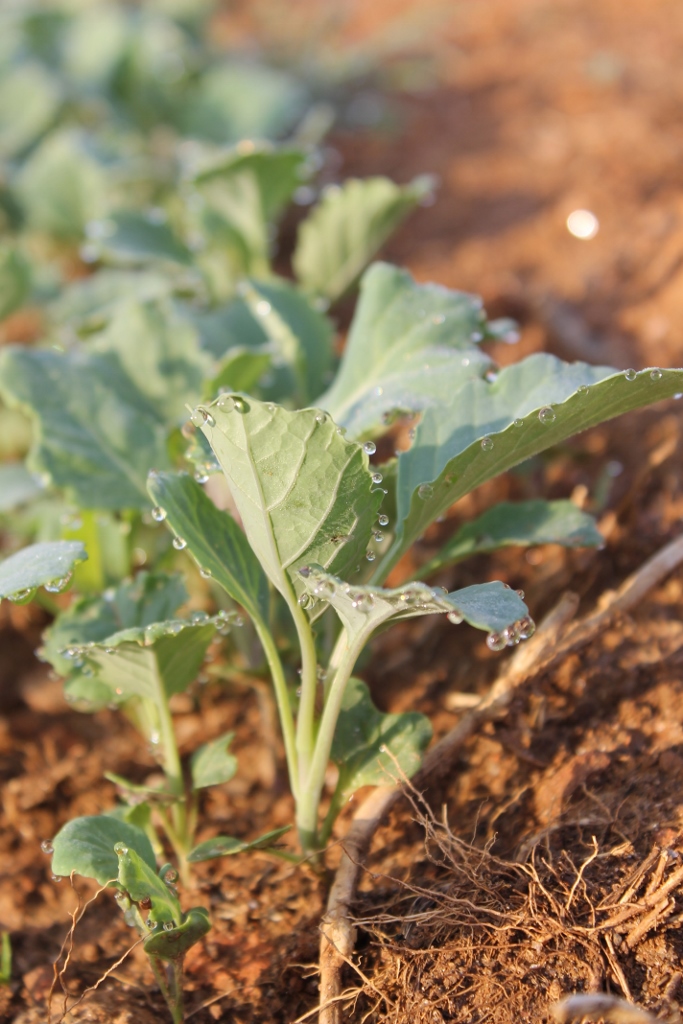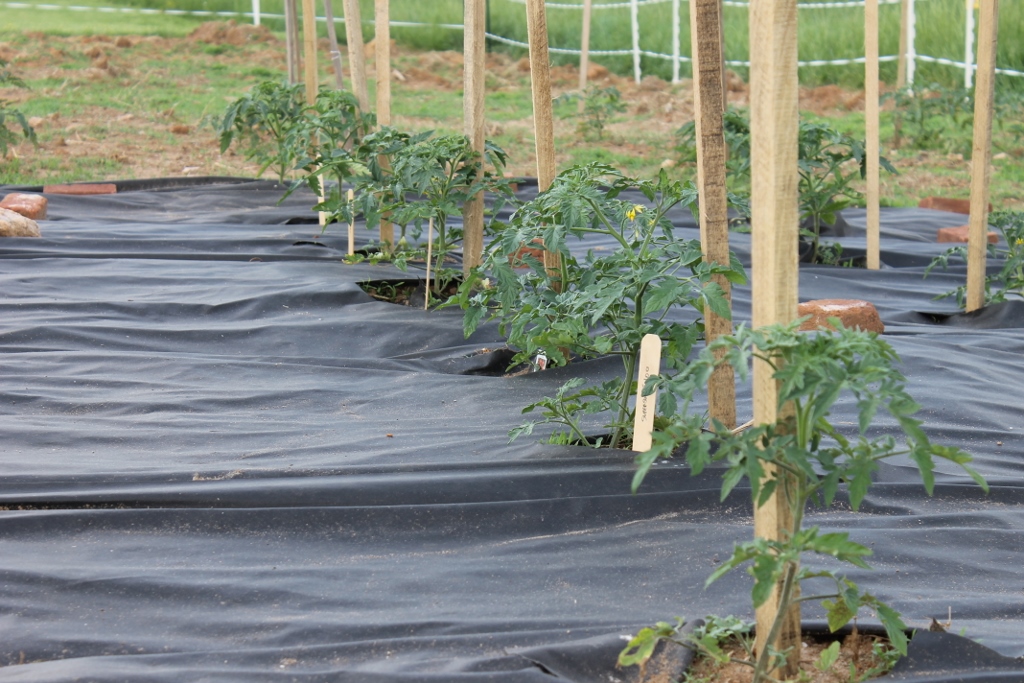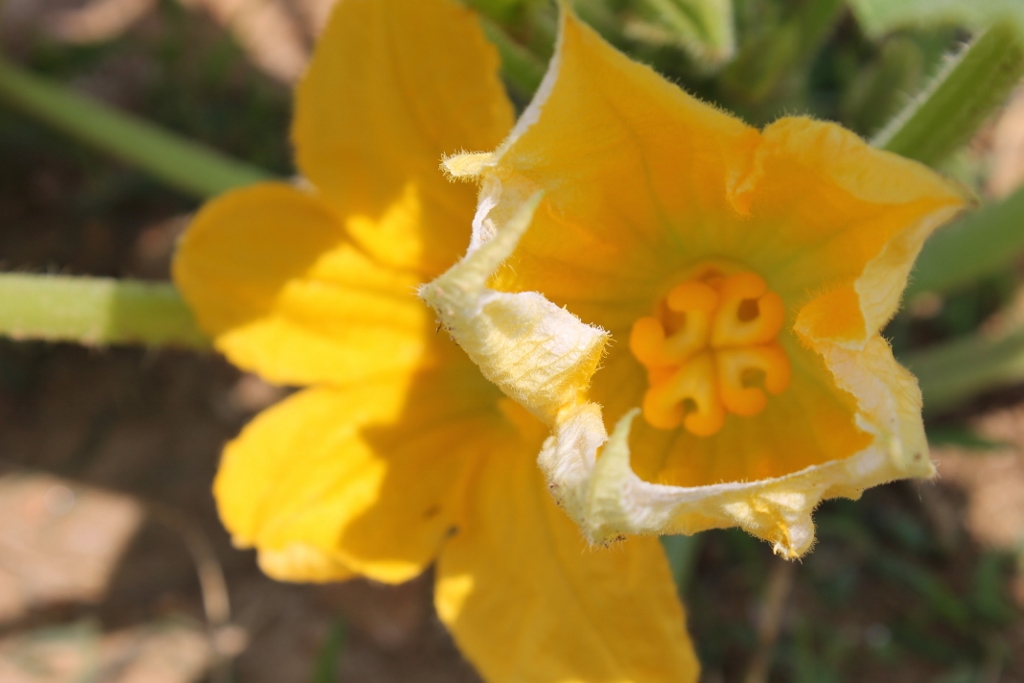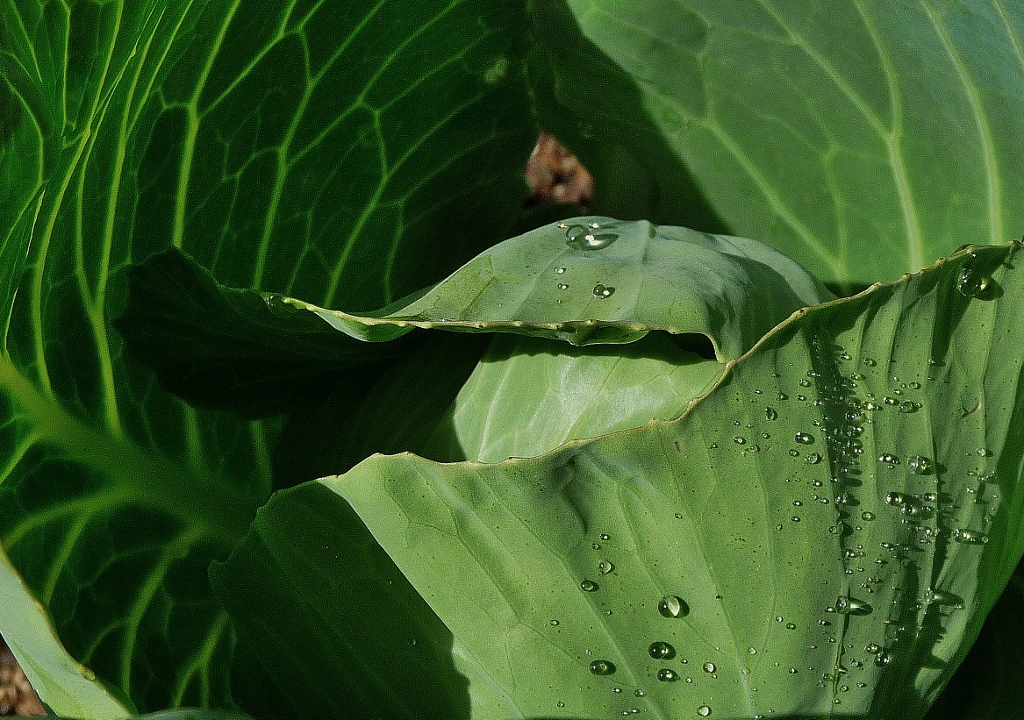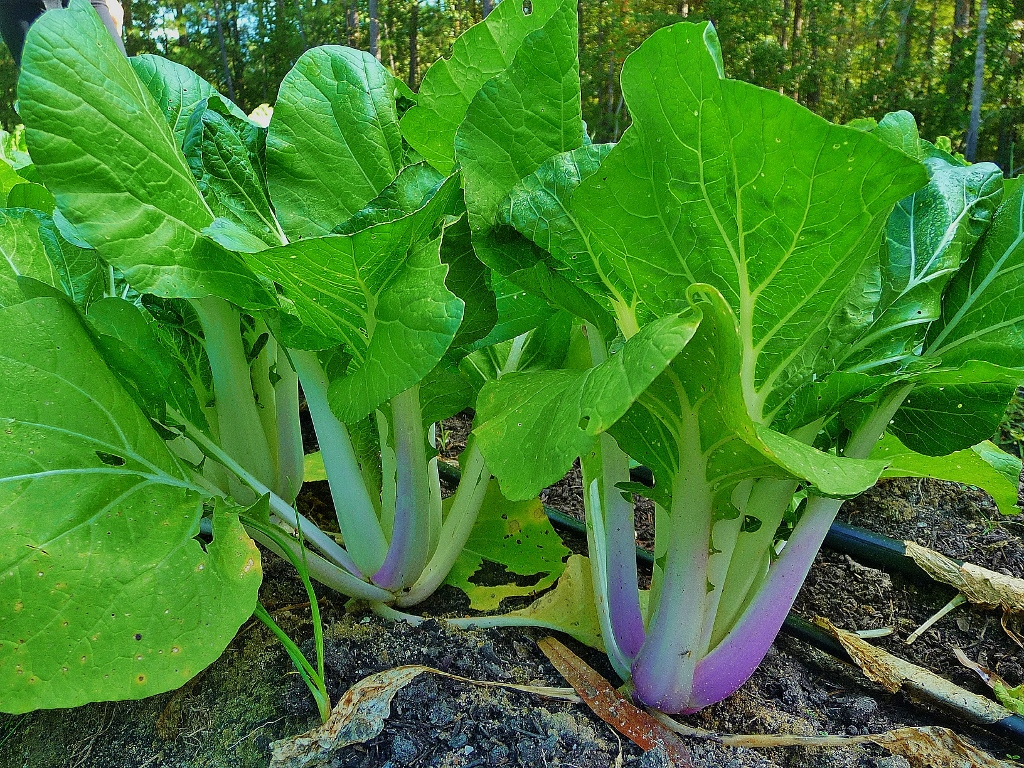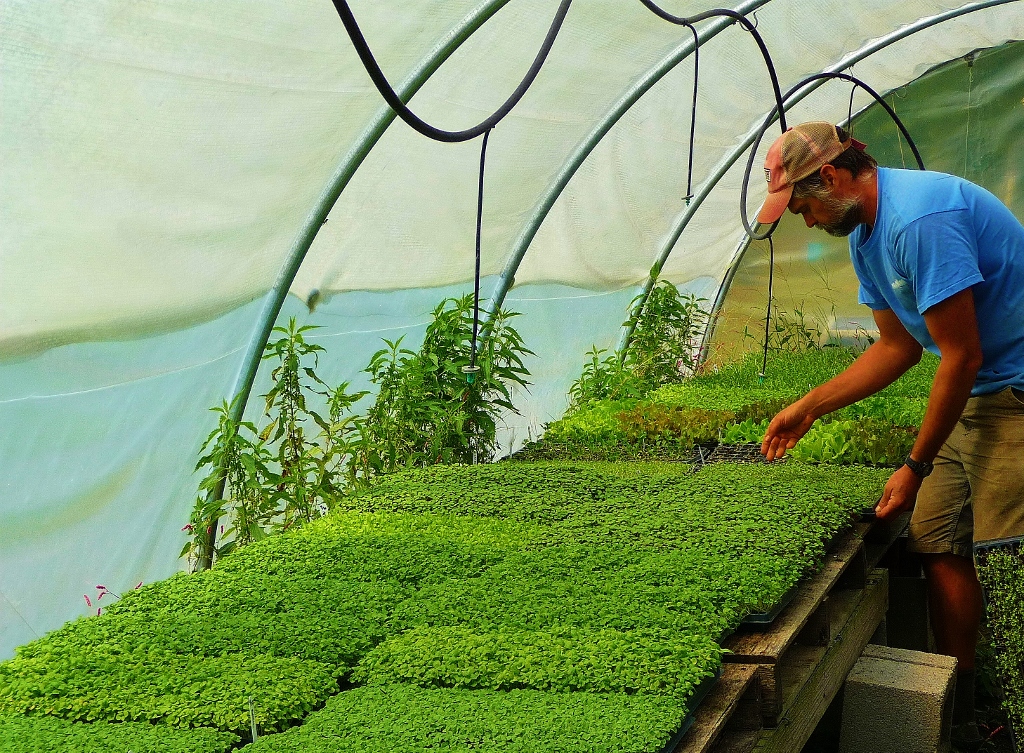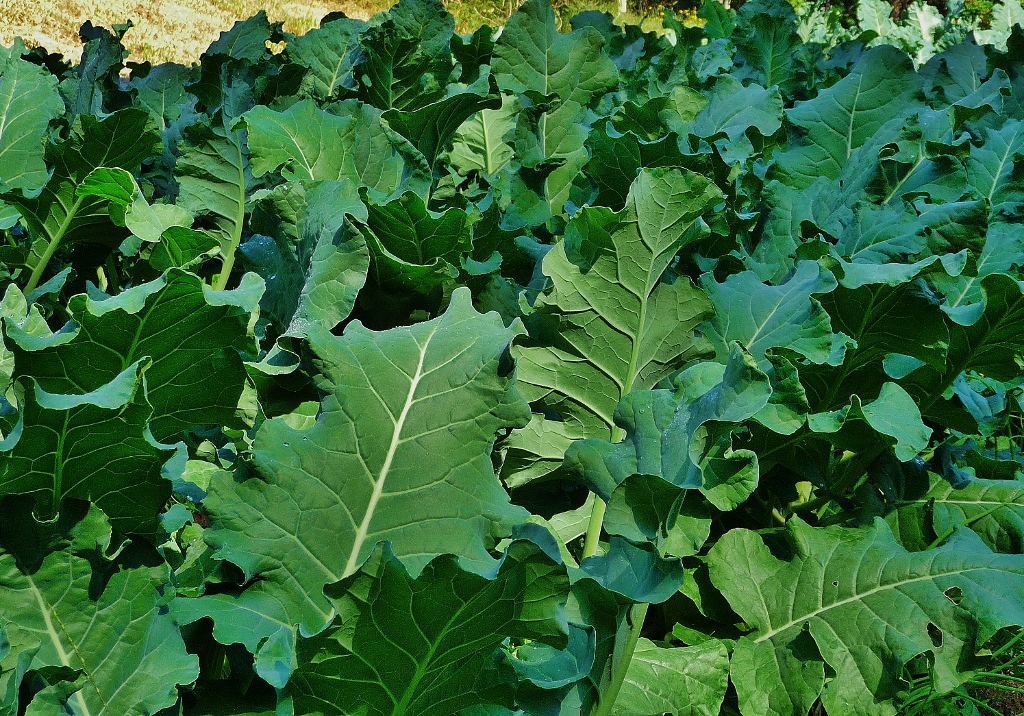On August 16th, a small crowd gathered at Magi’s farm in Central Virginia to look at one activity in particular—her edamame production. Edamame is best described as a vegetable soybean, but unlike “regular” soybeans grown around the region and sold in a dried-down state, edamame is harvested in the green pod stage while the seeds are still soft. From there, the pods are often steamed or boiled so that consumers can enjoy the beans on the inside.
Enter Magi, Virginia State University, and Virginia Cooperative Extension working together. Several years ago, Dr. Laban Rutto of VSU began an edamame project in the region which included exploring the best equipment for Central Virginia to grow, harvest, and process the crop. Magi became interested in producing edamame in coordination with this project, as the crop piqued her existing interest in engaging with a network of local health food growers and consumers. “Edamame is a food I’ve been eating for years in my salads, and I’ve been wanting to get into this program to learn how to grow it for my own consumption, but also, as another possible income generator,” she says.
This led to her eventually becoming host for the field portion of the August 16th field day, where Dr. Laban Rutto, Virginia State University Small Farm Outreach agents, and Virginia Cooperative Extension agents from the Prince Edward County office worked together to share information and provide a harvest equipment demonstration. Attendees watched as several rows were harvested with a pull-behind machine, a self-propelled harvester, and a stationary unit—each suitable for farms of varied field sizes and varied resources, and each potentially helpful for small-acreage farmers seeking mechanization compatible with edamame plants. Following the field visit and demonstrations, the group went on to sample edamame food products and visit edamame processing equipment at the Prince Edward cannery.
View videos of three edamame harvest methods:
Meanwhile, we met up with Magi to delve more into her edamame experience and her adventures in starting a small specialty farm from scratch:
Tell us a little about your farm–how did you get started?
“I call myself ‘Green Acres,’ because I am a city girl having a grand time learning how to be a farmer. I have had to learn from the ground up – but fortunately, I am married to a man who grew up as a real farmer, and who is willing to let me do this.”
What did you decide to grow when you got started here?
“We moved to central Virginia 12 years ago from Minneapolis, Minnesota. We bought six acres on the Slate River and I got to finally do all the things I’ve wanted to do. We planted a small orchard of peach, apple, pear and plum trees, a half dozen nut trees (pecans, almonds and black walnuts– before I realized those last ones grow wild here….), and a bunch of hazelnut bushes, and then strawberries, raspberries, blackberries, blueberries, elderberries, along with sweet potatoes. Finally we are also beekeepers for the pollination as well as for the honey. What we don’t grow, we barter with friends and neighbors who do.”
You’ve been very strongly interested in growing what you eat and purchasing your other food from neighbors and nearby farms, so I’m sure that comes with some difficulties at times. What are some of the biggest challenges facing your farm?
“Wow – what a question. The obvious challenge is there is never enough money – but farming for me is a choice. It is not my livelihood – or it would most definitely be money as the biggest challenge.”
Since we’ve been focusing on the VSU edamame project and the Extension field day taking place here to show people about edamame harvest and processing, can you tell us about your biggest challenges specifically related to growing edamame?
“So, I think the solid answer here is …..time and proper equipment. My husband and I both work full-time, so we have to prioritize and plan as well as we can. I have a 1953 Ford tractor and a 1965 IH tractor, along with all the implements I have needed – until edamame – for what I do. With these two tractors, I have prepared and I maintain about four acres of land holding all my plantings. The edamame needs a much larger tractor for harvesting – so long as I plan to harvest an acre or more at a time. Two pieces of equipment can be used for much smaller tracts, but the single row harvester needs a 75HP hydraulic tractor, which I had to rent this year. That was unexpected.
You have opted primarily to rely on cultural and mechanical controls to manage weeds and pest problems—tell us more about that.
“Another big commitment to the edamame is the weeding. I have a 2-row cultivator for the 60 rows, all about 200 long, which I planted in late May. I used it as often as the weather would permit (sometimes too dry and sometimes too wet – talk about Goldilocks and finding the conditions to be “just right”). But the cultivator can’t get to the base of the plants without risking losing the plants. So, we spent a lot of hours on hands and knees weeding the different vines that would choke my plants out. In the rows we didn’t get to weed manually, you can see the difference in the number of pods produced.”
Do you irrigate your edamame?
“We pump water from the Slate River but we don’t have an ‘irrigation system’ – we used 2-300 gallon containers that you see mulch dye stored in, to pump 600 gallons into, then attach another pump on the outflow pushing to 2 sprinklers. We have to move the sprinklers every 2 hours to get water the entire acre plus. That would take most of a weekend to give all the edamame a good drink.”
You are doing what many people ask us about when they move out to this region or when they contact Extension to see what they can do on a few acres—you’re operating to produce your food on a small acreage by focusing on niche and specialty crops. Do you have any successes or farm accomplishments you’d like to share with anyone else who tries this out?
“I think my success and/or accomplishments in farming come from being willing to keep trying. We’ve pretty much given up on growing peaches, for example: after all these years, despite having large healthy looking trees, we’ve never had a fruit crop. Now the peach trees remain as a great early food for our bees. The peach trees SING in the early spring with bees on every blossom!
On the plus, we live a healthy life, not just because we consume pretty much only what we grow – but because we are willing to work for it. Farming isn’t easy even if you have all the newest and biggest equipment – you are climbing up and down; you are weeding on your hands and knees; you are picking the product by hand in most cases (all of the fruit is hand-picked), so you are walking a LOT. I think I am healthier now than when I lived in the big city and went to a gym – because I am getting full body exercise, fresh air and I know exactly where my food is coming from.”




















